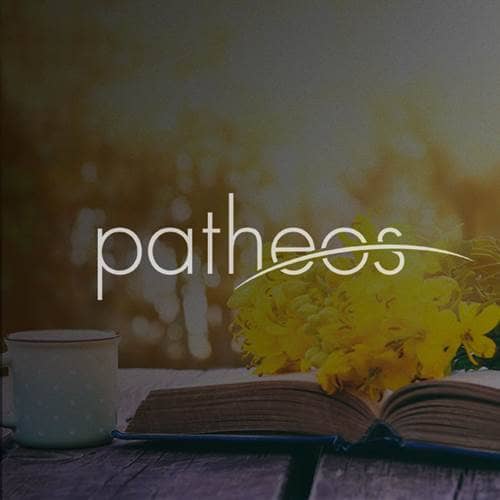- Trending:
- Pope Leo Xiv
- |
- Israel
- |
- Trump
- |
- Social Justice
- |
- Peace
- |
- Love

RELIGION LIBRARY
Zen
Symbolism
Zen shares many symbols with other forms of Buddhism, but there are a few that are unique to Zen. (In this section, for simplicity's sake, the term Zen often includes Chan). The enso, for example, is a symbol that is often used to represent Zen. The enso is a circle drawn in a single brush stroke. It may be large, painted with a broad vigorous stoke, or it may be narrow and refined. It may be a perfect circle, or it may be imperfect in some way. An enso might seem simple to draw but only a few painters are known for their excellent enso, which are said to represent their mastery of Zen.
The enso carries a variety of meanings. It can symbolize emptiness or fullness, presence or absence. All things might be contained within, or, conversely, excluded by its boundaries. It can symbolize enlightenment, or it can symbolize the moon, which is itself a symbol of enlightenment—as in the Zen saying, "Do not mistake the finger pointing at the moon for the moon itself." (In other words, do not mistake doctrines, teachings, or explanations, which are intended to guide one toward enlightenment, for enlightenment itself.)
Painting itself can be an expression of Zen principles in a visual medium. The 18th-century Rinzai Zen master Hakuin was among many well-known Zen painters. Like painting, poetry was also believed to display an awareness of Zen realization. There are a number of famous Zen poets—including Ryokan, Ikkyu, and Basho—whose poetry utilized Zen imagery, particularly references to nature, as well as allusions to historic Zen figures and places. These poems often included references to esoteric Buddhist and Taoist practices as well.
There is also, however, Buddhist poetry in this style written by monks who were not members of Zen sects, notably Saigyo and Ippen in Japan. The famous Chinese painter and poet Wang Wei, while often associated with Chan, was not a Buddhist monk at all, but a government official. Often studies and popular accounts of "Zen poetry" reflect a general Buddhist influence, rather than a Zen influence in particular. Other art forms, such as landscape gardening, martial arts, and tea ceremonies have likewise often been associated especially with Zen, though none of these forms is exclusive to Zen.
A type of garden that is often associated with Zen today is the rock garden. Small white pebbles are swept with a wooden rake into circular patterns. Sometimes a few large rocks are arranged among the many tiny pebbles. The rock garden symbolizes simplicity, tranquility, precision, and order. The act of creating the patterns, which must be repeated daily, is itself an act of meditation. The most famous Zen rock garden is at Ryoanji in Kyoto.
Some scholars argue that the fame of this garden and the concept of the rock garden as a Zen symbol are relatively recent notions, products of post-Meiji Japanese nationalism. Others argue that, whether authentically Zen or not, these art forms can still inspire an interest in the tradition.
A very different form of Zen symbolism is revealed in the architecture of Zen temples in Japan. Their structure is based on Chinese temple architecture, which was, in turn, based on a combination of Indian Buddhist architecture and Chinese architectural precedents.
The entrance to a Zen temple is called the Mountain Gate. This gate symbolizes crossing the boundary from worldly desires and conceptual thinking into emptiness. Next along the central axis is the Buddha Hall, which is designed for the worship of the Buddha and bodhisattvas. Before entering the Buddha Hall, one is to eliminate bodily impurities and wash; there are two small buildings for these purposes just beyond the entrance gate. Silence is expected in the Buddha Hall, as well as in the latrine and washroom.
Behind the Buddha Hall is the Monk's Hall, where meditation takes place. On the opposite side of the Buddha Hall is the kitchen. The Monk's Hall and kitchen symbolize the nourishment of mind and body. Finally, there is the Dharma Hall, where the monks assemble to hear lectures and sermons. Typically, there are many other buildings in the monastic complex, so this architectural structure is sometimes difficult to recognize.
An analogy is sometimes made between this structure and parts of the human body, or sometimes specifically the Buddha's body: the entrance gate represents the groin area, the Buddha Hall the heart, and the Dharma Hall the head. The bathhouse symbolizes the right leg, and the latrine, the left leg. The right arm is the kitchen, and the left arm the Monk's Hall. To enter the temple complex is therefore to enter the body of the Buddha, or to become the Buddha.
The robes of Zen and Chan monks are still another form of Zen symbol. Like all robes of Buddhist monks of different sects, they have a distinct and recognizable style, with variations in color and design in different countries. Although it is not unique to Zen, Zen is also associated with the "purple robe," that is, a robe of that color that was given as a reward to respected heads of monasteries. The expression "received the purple robe" is sometimes used to signify that an individual was appointed head of a Zen monastery.
The first purple robes were awarded by Empress Wu of China, who gave them to a group of monks, including her lover. Later the custom was brought to Japan. When the abbot of a monastery received a purple robe, it brought increased prestige and more donations to that monastery. There were scandals in both countries; for example, there were periods in both China and Japan where purple robes and certificates of investiture as abbots were sold to wealthy citizens. Dogen, the founder of Soto Zen in Japan, is said to have refused the offer of a purple robe several times, eventually accepting but never wearing it because he was adamant about staying clear of political connections.
Study Questions:
1. What is an enso? What does it symbolize?
2. Why are rock gardens popular within Zen? How did they come to be associated with it?
3. Describe the structure of a Zen temple. What rituals are associated within each part?
4. What is the significance of a purple robe?










